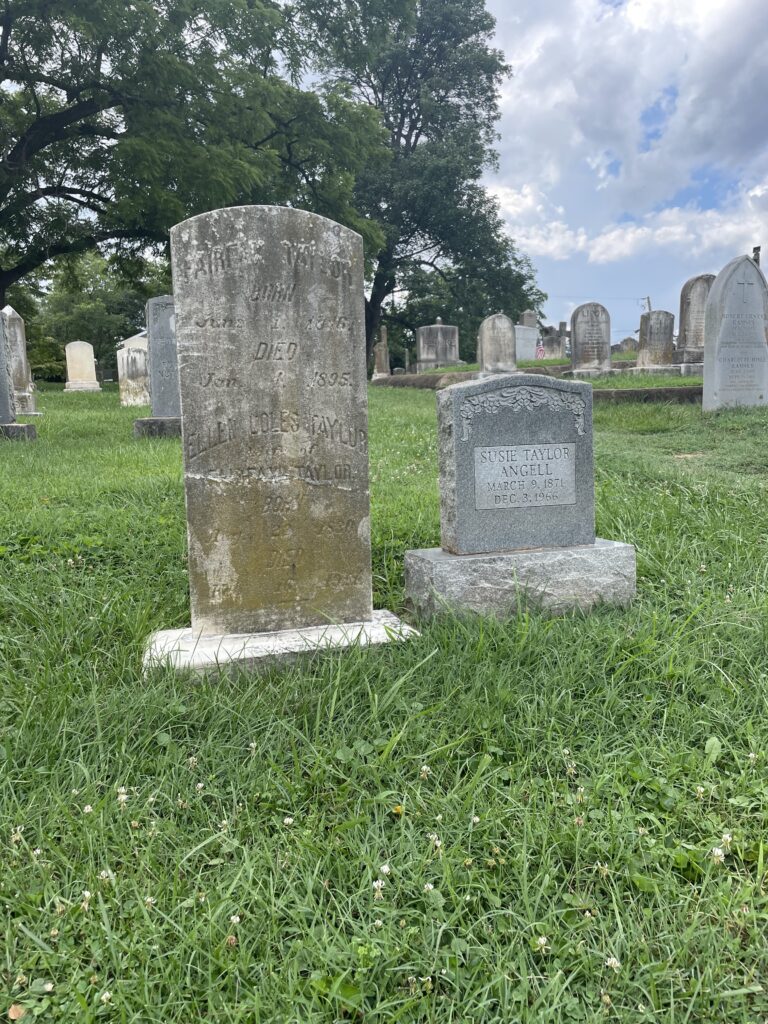by Emily Miller, 2022 Undergraduate Summer Research Fellow in Lived Theology
Having spent my last blog post discussing people who might have made the church split at Charlottesville Baptist more difficult, this week I want to refocus on a man who fought hard for First Baptist Church on Main Street’s Independence: the Reverend Fairfax Taylor. Born on June 1, 1816 in Charlottesville, Fairfax Taylor was the son of Bennett and Grace Taylor. Taylor bought his freedom prior to the Civil War and used that freedom to urge black liberation in Albemarle political and social circles. Taylor was considered a major radical for the nineteenth century, advocating for black inclusion on local juries and at the University. To provide a clearer picture of how this would have appeared to community members at the time, the first African American student to attend UVA, George Swanson, was not admitted until 1950, fifty-five years after Taylor’s death.
Fairfax Taylor was a member at Charlottesville Baptist Church, as well as one of the original ministers at First Baptist Church on Main Street, back when it was called Delevan Baptist. According to manuscripts available at the Albemarle County Historical Society, Taylor was “instrumental” in the separation agreement between the Park Street and Main Street churches. During dealings with the two church committees, Taylor often spoke on behalf of the black congregants, and was able to do so quite well; he could “not only read and write but [had] some knowledge of grammar,” according to Freedmen’s Bureau records, something unusual for African Americans of Charlottesville at the time.
While Taylor identified as a Baptist, he also served as the sexton at Christ Episcopal Church starting around 1859. According to church records, Taylor might have even been the first sexton at Christ Church, as his is the earliest name listed in the position. Much like at Charlottesville Baptist Church, black members of the congregation at Christ Episcopal were segregated to the balcony of the church during services, and like First Baptist they eventually petitioned to separate during World War I. Taylor remained employed by the church until December of 1883, and was possibly followed by his son, James T. S. Taylor.
One of nine children and the only boy, James followed in his father’s footsteps and was involved with local politics. He was elected to the Virginia Constitutional Convention in 1867, but did not have his father’s support in the election. When the time came to nominate a delegate, Fairfax endorsed Judge Rives, who was a radical white man. Fairfax believed that an African American would not have the “oratory skills or education” (according to manuscripts) to be an effective delegate, and advised that for the sake of representing African Americans properly, a white man should be sent. Regardless, James was nominated anyway and served on the Convention.
Fairfax Taylor’s legacy of activism and persistence permeates throughout the Charlottesville community today. A small road by Martha Jefferson Hospital was renamed Taylor Road in his honor in 1993, and his grave (pictured above) was rededicated in 2013. I had the honor of going to visit his grave just a few days ago, and was struck, similarly to last week, by the physical closeness of this history to where I live now. Hidden beneath the busyness of Charlottesville today, more and more I have found stories of unrelenting faith, courage, and the desire for freedom in our city. Taylor’s story reminds me of what Pat Edwards said just a few weeks ago when I visited her at First Baptist Church on Main Street: the original members were motivated by their reach toward freedom, a spiritual exercise of resilience and fortitude. Not too different, I’d wager, from the reach toward freedom Paul describes to the Romans in his Biblical letter: “Creation itself will be set free from its bondage to corruption and obtain the freedom of the glory of the children of God.”
Special thanks for this post goes to Michael Dickens, who I had the pleasure of speaking to about the history of Christ Episcopal Church and about Farifax Taylor. Some information for this article is taken from his book, Like an Evening Gone: A History of Christ Episcopal Church, Charlottesville Upon the Occasion of Its 200th Anniversary.
Learn more about the Emily’s Undergraduate Summer Research Fellowship in Lived Theology here.
The Project on Lived Theology at the University of Virginia is a research initiative, whose mission is to study the social consequences of theological ideas for the sake of a more just and compassionate world.

